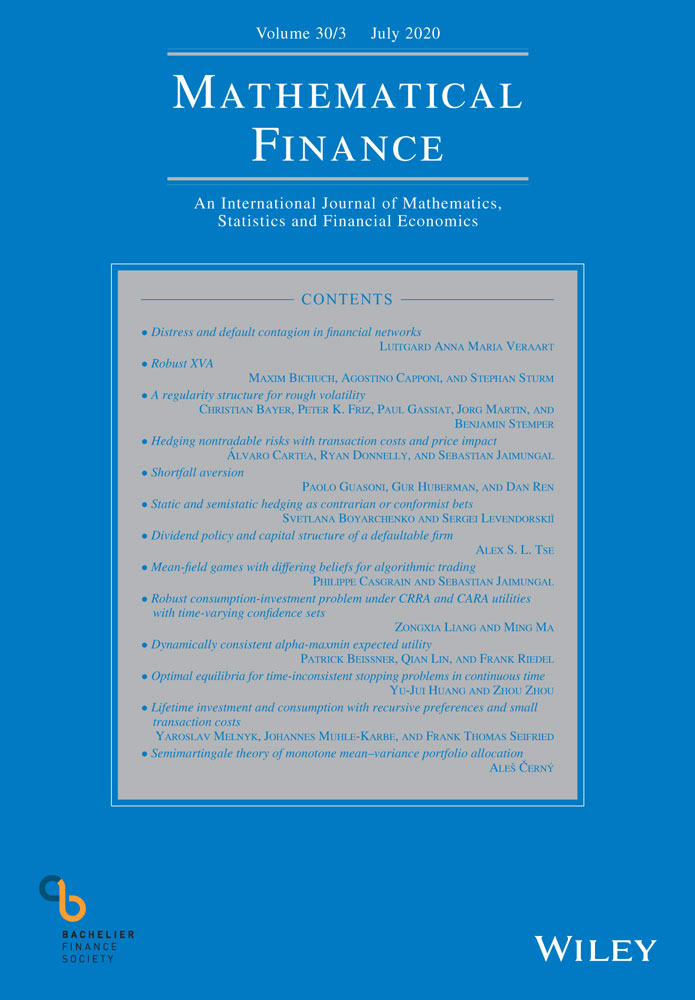Mean-field games with differing beliefs for algorithmic trading
Abstract
Even when confronted with the same data, agents often disagree on a model of the real world. Here, we address the question of how interacting heterogeneous agents, who disagree on what model the real world follows, optimize their trading actions. The market has latent factors that drive prices, and agents account for the permanent impact they have on prices. This leads to a large stochastic game, where each agents performance criteria are computed under a different probability measure. We analyze the mean-field game (MFG) limit of the stochastic game and show that the Nash equilibrium is given by the solution to a nonstandard vector-valued forward–backward stochastic differential equation. Under some mild assumptions, we construct the solution in terms of expectations of the filtered states. Furthermore, we prove that the MFG strategy forms an ε-Nash equilibrium for the finite player game. Finally, we present a least square Monte Carlo based algorithm for computing the equilibria and show through simulations that increasing disagreement may increase price volatility and trading activity.




